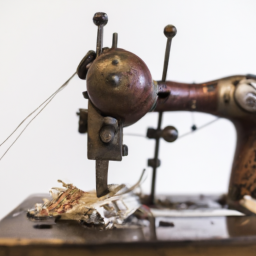
The Fascinating History of Stitching Machines
Stitching machines have revolutionized the way we sew and played a pivotal role in the development of the textile industry. Let’s delve into the rich history of stitching machines and explore their evolution over time.
The Early Beginnings
The first-ever functional mechanical stitching machine was designed and built by the French tailor Barthelemy Thimonnier back in 1830. This machine had a single thread and a hooked needle, which replicated the hand sewing technique, but at a much faster pace.
Although Thimonnier’s creation marked a significant step forward in sewing technology, it faced strong resistance from French tailors who feared for their livelihood. Consequently, a mob destroyed Thimonnier’s workshop, and it took several decades for the sewing machine to gain widespread acceptance.
The Rise of Mechanical Sewing Machines
It was the American inventor Elias Howe who obtained the first US patent for a mechanical stitching machine in 1846. Howe’s design utilized two threads, creating a lockstitch pattern, making it stronger and more reliable than previous models.
However, it was Isaac Merritt Singer who truly transformed the sewing machine industry. In 1851, Singer patented a machine that featured several important innovations, including a foot pedal to control the machine’s speed and a new bobbin design. The Singer sewing machine became incredibly popular, and the company he founded soon became a household name.
Electric and Computerized Sewing Machines
The introduction of electric power opened up new possibilities for sewing machines. In 1889, the Singer company released the first electric sewing machine, eliminating the need for manual motion and enhancing productivity even further.
Fast forward to the late 20th century, and computerized sewing machines began to emerge. With the integration of microprocessors, these machines offered advanced features such as programmable stitching patterns, automatic thread tension adjustment, and even LCD displays to provide instructions and stitch previews.
The Modern Era
In recent years, stitching machines have continued to evolve to meet the demands of a rapidly changing industry. Modern computerized machines now come with an array of capabilities, including embroidery functions, automatic buttonholes, and even wireless connectivity to transfer design files directly.
The advent of sewing machine technology has not only transformed the textile industry but has also made sewing accessible to a wider audience. From hobbyists to professional tailors, stitching machines have become an indispensable tool, making sewing faster, more efficient, and empowering individuals to unleash their creativity.
Conclusion
The history of stitching machines is a testimony to human ingenuity and the desire to innovate. From the humble beginnings of the mechanical models to the advanced computerized machines of today, stitching machines have played a vital role in shaping the way we sew and creating endless possibilities in the world of textiles.





Impressive!
Anirudh Shukla: Fascinating read!
Ankur Tanwar: Great article
This is an incredibly interesting post. It’s amazing to consider the evolution of stitching machines over the years, from the hand looms to the latest technology. It’s amazing the impacts that the invention of stitching machines have had – from making sewing faster and easier to reviving traditional crafts. We can really appreciate the improvements in speed and accuracy that this technology has made over the years.
Incredible!
Quite informative!